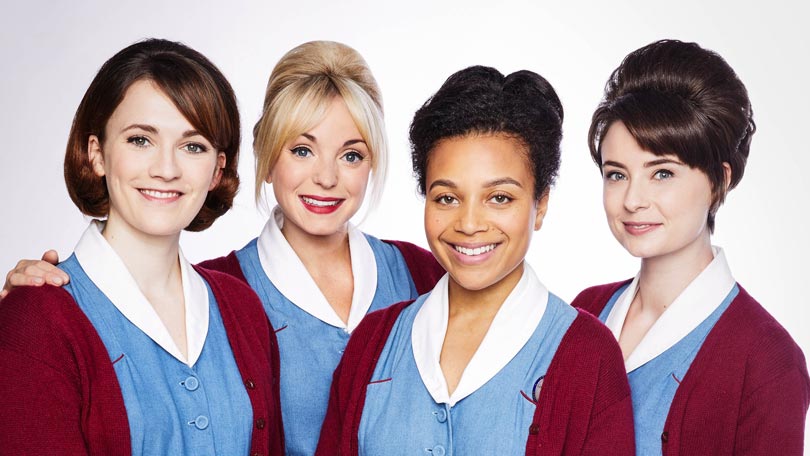What message does the BBC’s ‘Call the Midwife’ deliver about the profession?
Date 22.01.2018
22.01.2018
The seventh series of the BBC’s hit period drama Call the Midwife started yesterday. John Pendleton, Senior Lecturer in Midwifery at University of Northampton and midwifery student and chair of the university’s Midwifery Society Adelle Boughen talk about how they think the programme represents the profession in post-war Britain and compare it to modern day midwifery.
John Pendleton
What has not changed is the need for midwives to support women with dignity and respect and empower them to achieve the birth that is right for them.
There are two contrasting representations of midwifery on television at the moment: Call the Midwife and One Born Every Minute.
Since Jennifer Worth first published her memories of midwifery in post-war East London, the public appetite for gaining an insight into the private world of pregnancy and childbirth has gathered momentum.
It would be easy to imagine that in the current era, when almost 1 in 4 babies are born by caesarean section and medical interventions are increasingly common that One Born Every Minute is a more realistic representation of what is involved in modern day midwifery.
But labour care is just one small part of the midwife’s remit. Midwives are experts in uncomplicated pregnancies and facilitating physiological birth and there are many parallels to be found in what the midwives and nuns of Nonnatus house in Call the Midwife dealt with in the 1950s and what occurs in 21st century Britain.
The problems have evolved – malnutrition is now replaced by an obesity epidemic, poor access to contraception replaced by increasing demand for fertility treatment. But what has not changed is the need for midwives to support women with dignity and respect and empower them to achieve the birth that is right for them and allow them to make a positive transition to parenthood.
Sixty years on we are still doing that and the close relationships that evolve between mother, family and midwife throughout her pregnancy and childbirth is what is at the heart of our profession and is recognised in the drama of 60 years ago by practicing midwives today.
Adelle Boughan
It will be interesting to see what the midwife of the future will be doing.
Both Call the Midwife and One Born Every Minute have contrasting views on how the midwife should be portrayed and only the latter is based in a real-life and contemporary setting.
In some ways, I question whether this means the viewer misses watching the relationship between midwife and mother unfold and understand the importance of it.
It is easy to see that midwives have a unique opportunity to share the intimate moment of a child being born.
Yes, the viewer may witness the midwife tend to the mother at this time, but a student soon learns that observation of birth is a small part in learning the midwife’s role.
The core values of midwife’s of the past and today are still equally shared and this is to deliver holistic care to women and their families. This is illustrated in both programmes – when a woman grips the hand of a midwife and stares deeply, desperately into their eyes.
Or the moment she becomes vulnerable and feels like giving up and trusts that the midwife will guide and support her through delivery. The midwife’s compassion and empathy undoubtedly remains essential to the women they care for.
However, what is seen to change in comparing the programmes is the differences in practice from the 1950’s to the present day. Here, these programmes can be beneficial to the student’s learning experience.
On the issue of quick clamping of the umbilical cord, we question is this a practice of the past or done today just because the cameras are rolling? Or has recent evidence meant that delayed cord clamping is a modern-day practice?
Although both programmes have been made to entertain audiences, if edited and scripted correctly they can have an educational side too.
In the meantime, students will continue to learn midwifery practice that caters to the current population. It will be interesting to see how this changes over time and what the midwife of the future will be doing.
To watch the programme on catch-up, see the BBC’s website.
Find out more about the midwifery course at University of Northampton on our website.